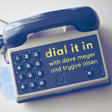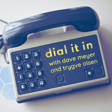
S3 Ep17: Tailoring Success - A Chat with Adam Groh
In this episode of the Dial It In podcast, host Trygve, joined by producers Andy and Nicole, discusses fashion with their guest Adam Groh, founder of Acme Clothiers. The conversation highlights Adam's journey from working in various industries to creating custom-made suits that exude confidence and precision. Adam explains the differences between off-the-rack and custom clothing, emphasizing the comfort, fit, and personalized experience that custom garments provide. The episode covers key wardrobe staples for professional men, the significance of dress and presentation, and insights into the growth of the custom clothing industry. Additionally, Trygve shares his personal challenges with finding well-fitting shirts and explores future fashion trends. The episode concludes with Adam providing information on how listeners can connect with him and Acme Clothiers online.
Connect with Adam:
@MN_gent
@AcmeClothiers
AcmeClothiers.com
LInkedIn
…
Dial It In Podcast is where we gathered our favorite people together to share their advice on how to drive revenue, through storytelling and without the boring sales jargon. Our primary focus is marketing and sales for manufacturing and B2B service businesses, but we’ll cover topics across the entire spectrum of business. This isn’t a deep, naval-gazing show… we like to have lively chats that are fun, and full of useful insights. Brought to you by BizzyWeb.
Links:
Website: dialitinpodcast.com
BizzyWeb site: bizzyweb.com
Connect with Dave Meyer
Connect with Trygve Olsen

